
Gemme verdi: elenco di 31 gemme verdi e i loro significati
 Se siete alla ricerca di pietre preziose colorate , i cristalli verdi sono un'ottima scelta! Le pietre preziose verdi sono una delizia da guardare, indossare e usare a scopo curativo. Dal lime brillante al pistacchio tenue, fino al verde bosco intenso, le pietre e i cristalli verdi offrono decine di opportunità.
Se siete alla ricerca di pietre preziose colorate , i cristalli verdi sono un'ottima scelta! Le pietre preziose verdi sono una delizia da guardare, indossare e usare a scopo curativo. Dal lime brillante al pistacchio tenue, fino al verde bosco intenso, le pietre e i cristalli verdi offrono decine di opportunità.
Quali sono le pietre verdi? Oggi, parleremo di un elenco completo di nomi e significati dei cristalli verdi:
Pietre preziose verdi
Smeraldo
Giada
Maw Sit Sit
Alessandrite
Malachite
Apatite
Crisoprasio
Granato
Zaffiro
Amazzonite
Crisoberillo
Prasiolite
Peridoto
Turchese
Crisocolla
Diopside di cromo
Diasporo
Moldavite
Prehnite
Hiddenite
Agata
Tormalina verde
Topazio verde
Fluorite verde
Diaspro verde
Opale verde
Calcite verde
Pietra di luna verde
Spinello verde
Avventurina verde
Diamante verde
Prima di approfondire ogni pietra preziosa , parliamo del suo lato spirituale. Cosa rappresenta il cristallo verde?

Significato delle pietre preziose verdi
Il colore verde simboleggia crescita, rinnovamento e abbondanza. Associazioni comuni con il verde hanno permeato diverse interpretazioni culturali del colore, come il denaro o la natura.
Astrologicamente, le pietre verdi sono cristalli dell'elemento terra, che portano fortuna ai segni del Toro, della Vergine e del Capricorno. Infatti, la parola "verde" deriva dall'inglese antico grenian , che significa "prosperare".
Le pietre verdi curative si collegano al chakra del cuore. I cristalloterapeuti usano spesso le gemme verdi per armonizzare emozioni e intelletto, portare fortuna e, naturalmente, connettersi con Madre Natura!
Qual è il cristallo verde più adatto a te? Dipende dalla tonalità, dallo stile e dalle proprietà curative che stai cercando.
Per cominciare, qual è la pietra preziosa verde più popolare?
Le gemme verdi più popolari

Smeraldo
La pietra preziosa verde più popolare è senza dubbio lo smeraldo. Gli smeraldi sono gemme preziose della famiglia dei berilli , amate in tutto il mondo da secoli. Questi cristalli presentano tonalità intense, anche in gradazioni di colore "molto chiare". I colori dello smeraldo possono essere verde intenso, verde-giallo o verde-bluastro.
Reali come Cleopatra e la principessa Diana si adornavano con gioielli di smeraldi. Prima che i conquistadores spagnoli iniziassero a riportare in Europa gli smeraldi dal "Nuovo Mondo" nel XVIII secolo, gli Inca utilizzavano queste gemme verde scuro già da 5 secoli. In Egitto, le miniere di smeraldi risalgono a circa il 1500 a.C.
Diverse leggende sui poteri dello smeraldo sostengono che la pietra conferisca lungimiranza, potere ed eloquenza. Oggi, lo smeraldo è la pietra portafortuna del mese di maggio e la pietra preziosa tradizionale del 35° anniversario di matrimonio !
Lo smeraldo è una pietra preziosa, ma cos'è una pietra semipreziosa verde? Una di queste è la giada!
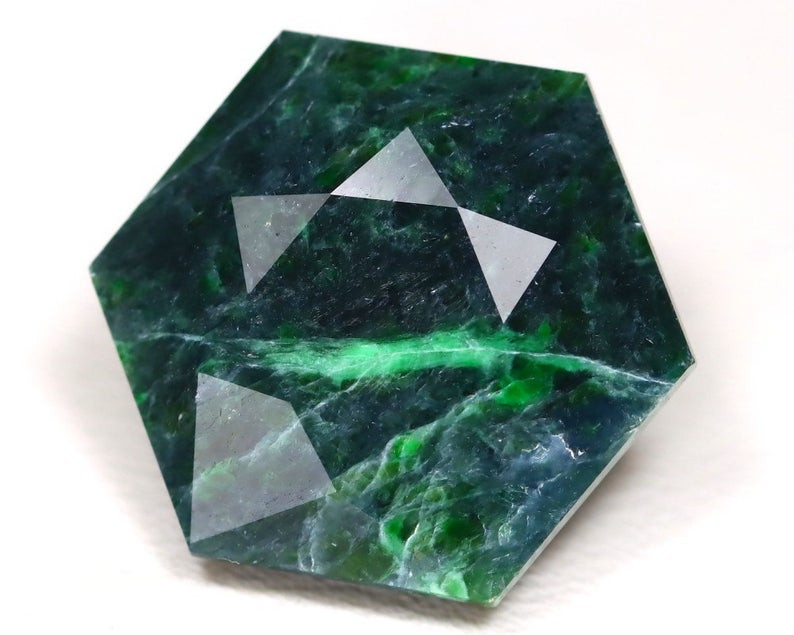
Giada
Il termine "giada" si riferisce a due gemme simili ma distinte: la giadeite e la nefrite . Entrambe le pietre presentano molteplici tonalità di verde. La nefrite presenta tonalità tenui, da verde chiaro a verde intenso, mentre la giadeite presenta generalmente tonalità più sature, dal verde mela al verde smeraldo. Il colore verde smeraldo, chiamato "verde imperiale", è il più prezioso.
Un altro legame tra giadeite e smeraldo risiede in Thailandia: il Buddha di Smeraldo. Nessun'altra icona religiosa è più venerata in Thailandia, ma indovinate un po'? È fatto di giadeite verde!
Le antiche credenze cinesi sostenevano che la giada rappresentasse nobiltà e virtù. Oggi, la giada simboleggia saggezza, umiltà e prosperità, oltre a commemorare il dodicesimo anniversario di matrimonio.
La durezza delle pietre di giada è piuttosto media, ma vantano la più alta resistenza alla rottura, il che le rende pietre verdi perfette per la gioielleria.
La giada verde di alta qualità può essere costosa, però. Per gli amanti della giada con un budget limitato, quale pietra verde assomiglia alla giada? Sarebbe... maw sit sit!

Maw Sit Sit
Il Maw Sit Sit è una rara roccia verde brillante simile alla giadeite. È composta da feldspato di albite, giadeite e altri minerali, da cui derivano nomi commerciali come "albite di giada" e "cloromelanite". Per fare un paragone, la cloromelanite è una varietà di giadeite di colore verde-nero scuro.
Queste gemme verdi, da traslucide a opache, presentano solitamente venature verde scuro o nere. La vivace tonalità verde deriva da un elevato livello di cromo, lo stesso elemento che crea giadeiti verdi, granati verdi e smeraldi.
Il Maw Sit Sit è una gemma piuttosto moderna, scoperta ufficialmente nel 1963 dal gemmologo svizzero Edward Gubelin. Gubelin trovò la pietra in Birmania, sull'Himalaya, e le diede il nome di un villaggio vicino.
Dal punto di vista curativo, si dice che i cristalli maw sit sit diano energia e vitalità a chi soffre di depressione, aiutandolo a scoprire la gioia.

Alessandrite
L'alessandrite è una rara gemma cangiante appartenente alla famiglia dei crisoberilli. Le migliori alessandriti passano dal verde smeraldo alla luce del sole al rosso rubino sotto la luce incandescente.
Altre alessandriti potrebbero apparire verde acqua o blu alla luce del sole e rosa o viola alla luce incandescente. La maggior parte dei gemmologi la classifica come "vera" alessandrite solo se mostra netti cambiamenti dal rosso al verde.
L'alessandrite è particolarmente amata in Russia, la nazione da cui ha preso il nome lo zar Alessandro II. Inoltre, al momento della sua scoperta, le tonalità verdi e rosse dell'alessandrite si abbinavano ai colori militari russi.
Spiritualmente, l'alessandrite simboleggia la distinzione e aiuta il sistema circolatorio, secondo le credenze cinesi. Questa pietra preziosa rossa e verde è una pietra portafortuna di giugno e una pietra per il 55° anniversario di matrimonio.
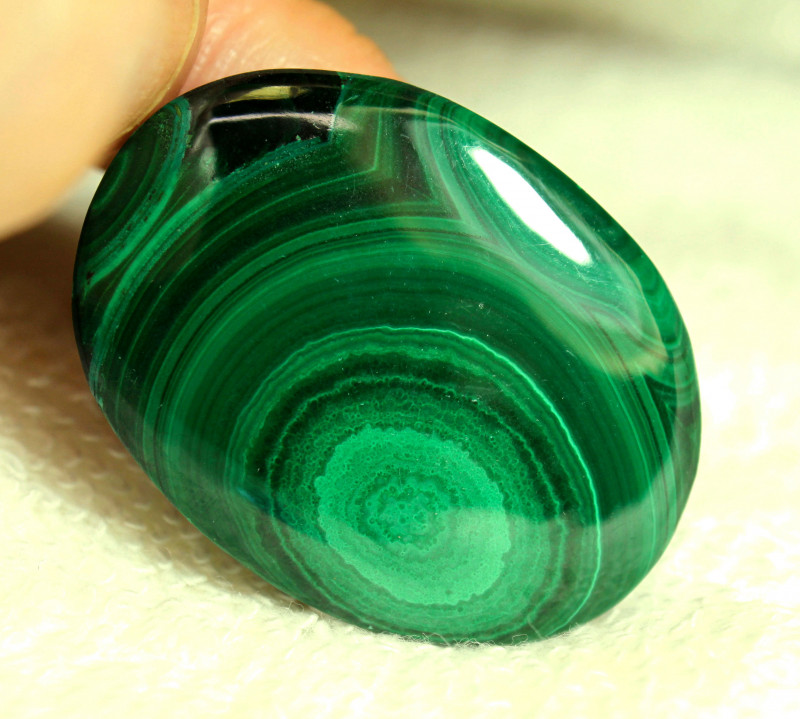
Malachite
La malachite è una pietra preziosa di carbonato di rame di colore vibrante, che prende il nome dalle foglie verdi della malva. Che aspetto ha la malachite? Le pietre di malachite presentano bande colorate a spirale, di colore verde chiaro o scuro.
Questa pietra verde opaca è bellissima, ma purtroppo si colloca a un basso livello di durezza, tra 3,5 e 4 sulla scala di Mohs . Pertanto, è più adatta per cabochon o gioielli meno delicati come i pendenti. I cristalli di malachite spesso si intrecciano con l'azzurrite durante la formazione, creando l'azurmalachite, un gioiello dai riflessi blu e verdi.
Il Palazzo d'Inverno in Russia è un esempio del potenziale decorativo della malachite: contiene un'intera stanza decorata con circa 400.000 libbre di malachite!
Astrologicamente, la malachite è una pietra stellare per Giove e Venere, oltre che una pietra zodiacale per Capricorno e Scorpione. Questi cristalli verdi simboleggiano forza, concentrazione e chiarezza mentale.
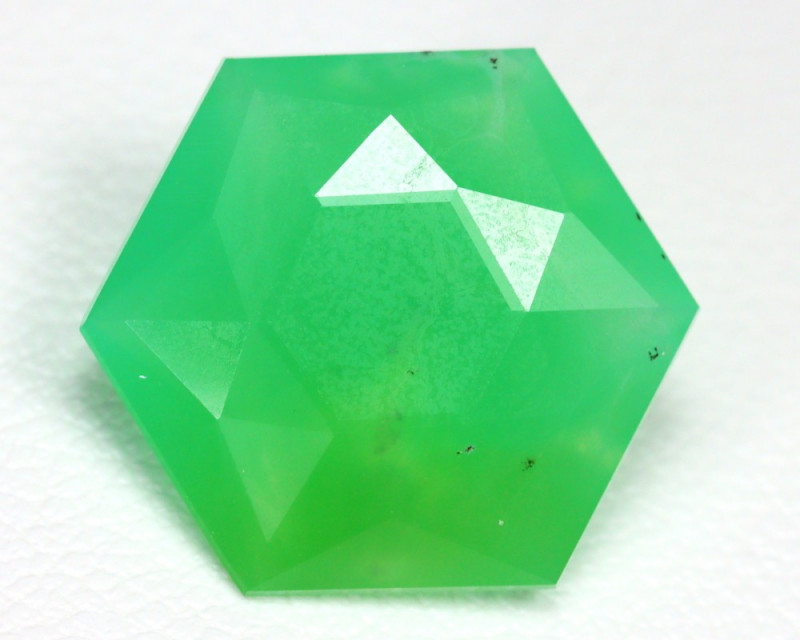
Crisoprasio
Il crisoprasio è una gemma di calcedonio che di solito ha un colore che va dal verde acqua al verde mela, ma a volte è giallo. Il crisoprasio giallo può essere chiamato crisoprasio al cedro o crisoprasio al limone.
Come il maw sit sit, il crisoprasio ricorda la giada. Gli acquirenti confondono il crisoprasio anche con il calcedonio cromato, ma la tonalità verde del crisoprasio deriva dal nichel, mentre quella del calcedonio cromato dal cromo.
Il nome della pietra deriva dal greco chrysos , che significa "oro", e prason , che significa "porro". È una delle tante gemme di calcedonio verde, ma è al secondo posto per valore rispetto a tutte le varietà di calcedonio.
Il crisoprasio è soprannominato "Pietra del Pensiero" per la sua presunta capacità di rafforzare la concentrazione e l'intelletto. Questi cristalli verdi promuovono anche la positività e celebrano il 18° anniversario di matrimonio!
Ora, qual è la gemma verde più rara? Il titolo spetta al granato tsavorite!
Gemme verdi rare
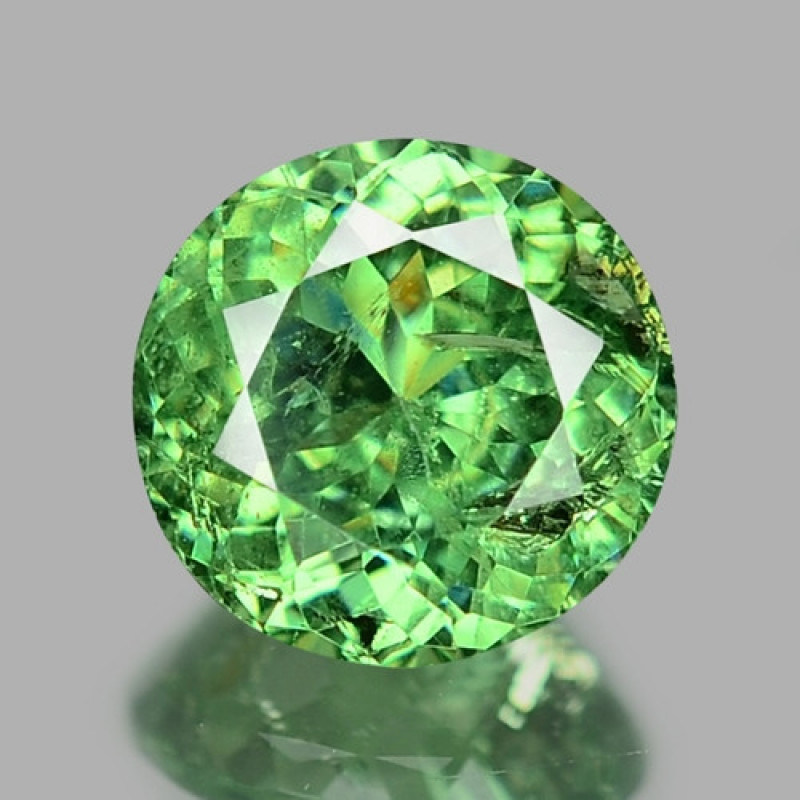
Granato
La famiglia del granato è complessa e variegata e vanta due varietà verdi:
Tsavorite : varietà di granato grossolano di colore giallo-verde intenso o blu-verde.
Demantoide : varietà di granato andradite di colore dal verde oliva brillante al verde smeraldo intenso.
Mentre la tsavorite è la gemma verde più rara, il demantoide è la varietà di granato più preziosa. I granati demantoidi hanno una maggiore dispersione (fuoco), il che significa che brillano con bagliori colorati.
La scoperta ufficiale del demantoide avvenne nel 1852, molto prima della scoperta della tsavorite nel 1967.
La maggior parte della tsavorite proviene dalla Tanzania, mentre il demantoide è originario della Russia. Campbell Bridges, che scoprì la tsavorite, insieme all'allora presidente di Tiffany & Co. Henry B. Platt, diede il nome alla pietra dal Parco Nazionale dello Tsavo in Kenya, vicino al luogo del ritrovamento.
Si dice che entrambi i granati verdi ispirino impegno e amore. I guaritori di cristalli credono che queste pietre possano portare ricchezza e prosperità nella vita, perfette per iniziare l'anno come pietra portafortuna di gennaio !
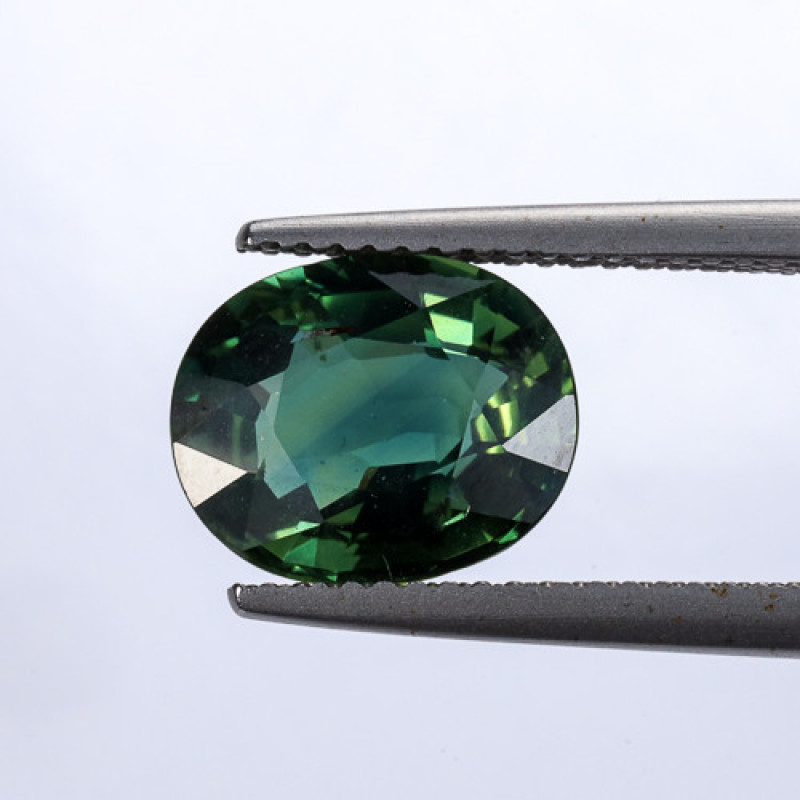
Zaffiro verde
Sebbene lo zaffiro sia tradizionalmente blu, la presenza di ferro può dare origine a zaffiri verdi! Gli zaffiri verdi vanno dal verde menta pallido al verde foresta, spesso con sfumature blu o gialle. Il più delle volte, queste pietre sono verde oliva o verde-marrone.
Sebbene gli zaffiri verdi non siano molto conosciuti, non sono poi così rari. Anzi, sono più accessibili degli zaffiri blu o Padparadscha!
Sei nato a settembre? Se sì, lo zaffiro è la tua pietra portafortuna tradizionale ! Inoltre, la sua elevata resistenza (9 sulla scala di Mohs) lo rende una delle pietre verdi più adatte per gli anelli, sia per l'uso quotidiano che come anello di fidanzamento unico!
Lo zaffiro può essere blu o verde, ma quale pietra è blu e verde?

Amazzonite
L'amazzonite è una pietra opaca, blu-verde, con una leggera fluorescenza verde oliva. Questa gemma blu-verde è un minerale tettosilicato. Spesso si notano anche striature bianche, causate da inclusioni di cristalli di albite. Tuttavia, una maggiore quantità di albite significa un valore inferiore.
Le pietre di amazzonite lucidate presentano motivi a ragnatela e schiller , una lucentezza metallica chiamata anche avventurescenza.
Chiamate anche "pietra dell'Amazzonia", queste pietre prendono il nome dal Rio delle Amazzoni, ma non si trovano lì. Prove archeologiche, in particolare gioielli e ornamenti rinvenuti nella tomba di Tutankhamon, hanno dimostrato che l'amazzonite era presente nell'antico Egitto.
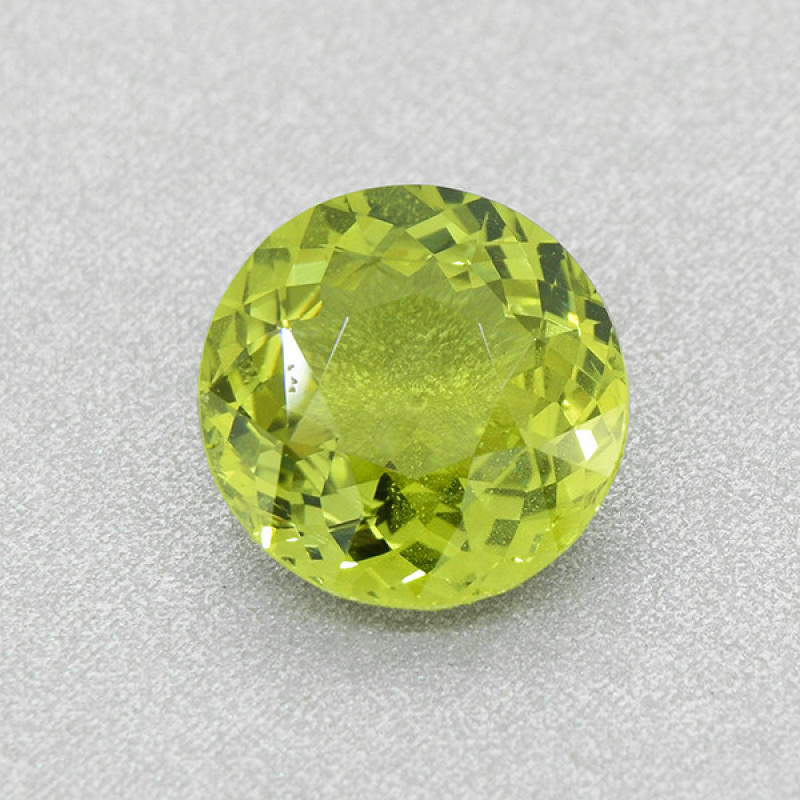
Crisoberillo
Il crisoberillo è una pietra preziosa dal giallo-verde pallido al verde, nota per avere l' effetto "occhio di gatto" (gatteggiamento) più intenso di qualsiasi altra pietra preziosa. Non tutti i crisoberilli mostrano un effetto "occhio di gatto". Quelli che lo mostrano sono più belli di un marrone miele, e il riflesso "occhio di gatto" potrebbe avere un luccichio blu.
Il crisoberillo occhio di gatto è chiamato cimofano, che significa "che appare come un'onda" per la sua opacità interna. Queste pietre sono anche pleocroiche (mostrano colori diversi a seconda dell'angolazione) nelle tonalità del marrone e del giallo.
Si dice che gli usi metafisici del crisoberillo includano l'aumento dell'autocontrollo, il miglioramento della concentrazione e l'equilibrio del chakra del plesso solare. Storicamente, in Asia si credeva che le pietre di crisoberillo allontanassero il malocchio.

Prasiolite
Il quarzo è disponibile in molti colori, incluso il verde! Quindi, cos'è il quarzo verde? Il quarzo verde è chiamato prasiolite, una pietra traslucida di colore verde chiaro che si forma naturalmente o trattando l'ametista.
Alcune prasiolite possono presentare zone di colore viola dovute all'ametista residua, ma la maggior parte è di un verde melata chiaro. Altri nomi per la prasiolite sono vermarino e verde ameta.
Le pietre di prasiolite simboleggiano autosufficienza e compassione. Questi cristalli verde chiaro sono chiamati pietre della prosperità, si dice che attirino opportunità benefiche e facciano credere in se stessi.
Queste gemme sono anche pietre zodiacali per Capricorno e Vergine. Rappresentano anche un'alternativa economica alla pietra portafortuna di agosto (e la prossima della nostra lista): il peridoto.
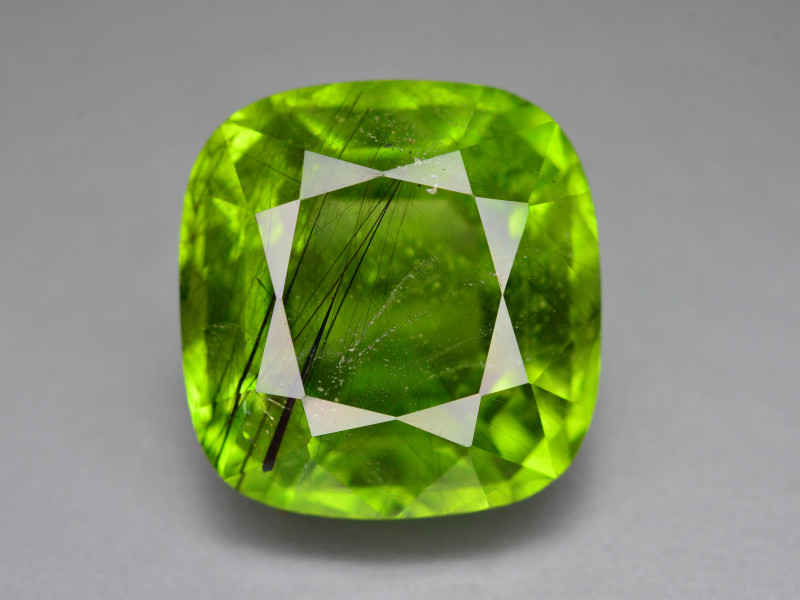
Peridoto
Quando si parla di gemme di colore verde chiaro, il peridoto è spesso in cima alla lista. Il peridoto, o crisolito, è una gemma di olivina. Queste pietre presentano solitamente tonalità chiare ma vivaci di verde oliva con sfumature ambrate, sebbene alcune siano verde bosco con sfumature gialle.
Queste pietre verde chiaro sono molto apprezzate nei circoli curativi perché favoriscono un sonno migliore, un equilibrio emotivo e livelli di stress più bassi.
Una cosa che forse non sapete è che il peridoto si pronuncia pair-ih-doh! Un fatto ancora più affascinante: alcune di queste pietre, chiamate peridoti spaziali , provengono da meteoriti! Come sapete, il peridoto è anche una pietra portafortuna di agosto.

Turchese
Il turchese è una pietra opaca, a base di fosfato di rame e alluminio idrato, con sfumature di blu-verde o blu. Il più delle volte, il turchese presenta venature o macchie dal bianco al marrone, che a volte creano disegni simili al "turchese a ragnatela" con motivi a pizzo. Le venature sono una matrice, causata dai resti della roccia madre del turchese.
Il suo nome deriva dal termine francese del XVII secolo "turquois" , che significa "turco", poiché gli esploratori turchi introdussero queste pietre nell'Europa medievale. Tuttavia, il turchese era noto già secoli prima, con nomi come "callais" per gli antichi greci o "chalchihuitl" per gli aztechi.
Questi cristalli blu-verdi sono portafortuna e simboleggiano tranquillità e speranza. La loro colorazione che ricorda il mare e il cielo evoca pace, guarigione e protezione. Inoltre, il turchese è una pietra portafortuna di dicembre e la pietra preziosa dell'undicesimo anniversario di matrimonio!
Poi abbiamo un'altra gemma di carbonato di rame blu-verde: la crisocolla!

Crisocolla
La crisocolla è una pietra carbonatica di rame opaca, di colore verde acqua, blu-nerastro o blu, solitamente con venature marroni. Le inclusioni di cuprite possono dare origine a crisocolla bicolore rossa e verde acqua, mentre le inclusioni di ossido di ferro creano striature dimensionali grigie o nere.
Oltre alle inclusioni, la crisocolla si mescola spesso con altre gemme per creare varietà distinte. Miscele di malachite o turchese, e altri carbonati di rame, sono comunemente osservate, conferendo alla crisocolla caratteristiche venature blu e verdi. La varietà "Ala di Pappagallo" unisce crisocolla, diaspro, azzurrite e quarzo, creando una pietra bruno-verdastra con spruzzi rossi.
Poiché la crisocolla pura si colloca tra 2 e 4 sulla scala di Mohs, la sua combinazione con altre gemme la rende un'opzione più resistente. Gli anelli in crisocolla sono perfetti come pietre zodiacali per i Gemelli!
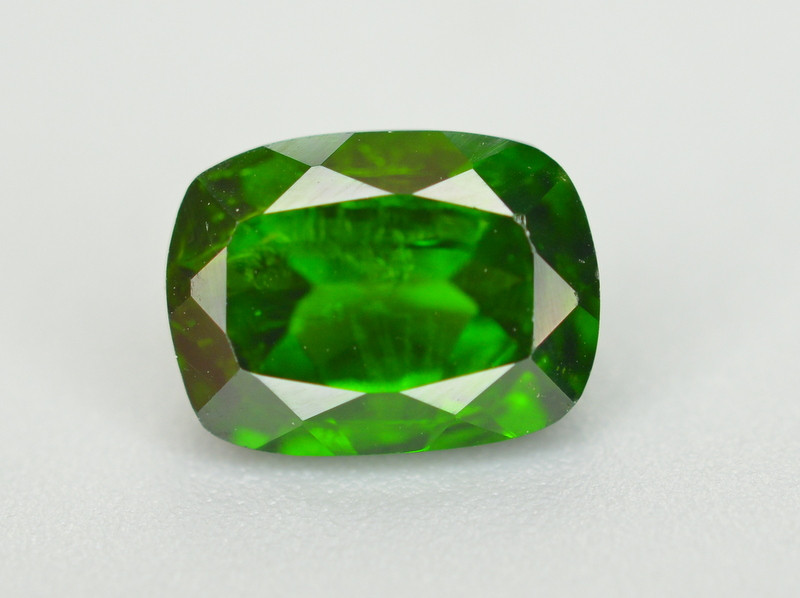
Diopside di cromo
Il cromo diopside è una pietra rara di diopside di qualità gemma. La colorazione profonda e intensa di questa gemma verde smeraldo è dovuta al cromo. Queste pietre possono emettere fluorescenza in viola, verde, giallo e arancione. Hanno anche un'eccellente brillantezza (scintillio) e purezza.
Oltre al verde smeraldo, il cromo diopside può essere anche verde chiaro, verde erba brillante o verde foresta scuro. Gli esemplari più grandi presentano in genere tonalità più scure. La maggior parte delle pietre di cromo diopside proviene dalla Siberia orientale o dal Pakistan.
Il cromo diopside ha storicamente simboleggiato opportunità di successo. Il nome "diopside" si traduce in "due" e "visione", poiché gli antichi collegavano la pietra alla visualizzazione. Altre leggende narrano che provenisse dall'albero della vita, religioso o mitologico.
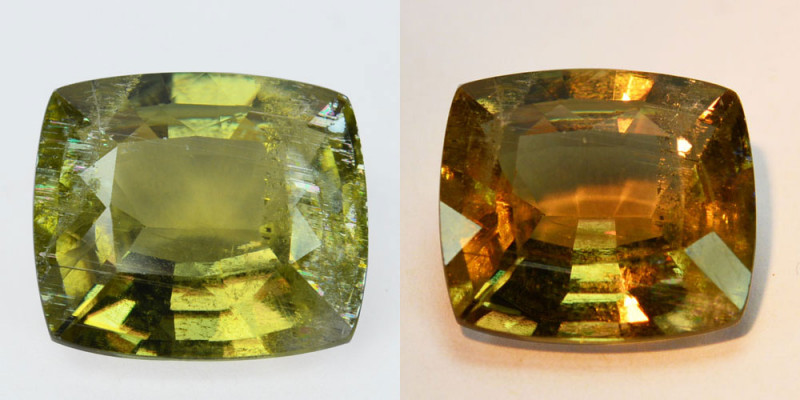
Diasporo
Chi cerca una pietra preziosa cangiante dalle tonalità delicate e floreali amerà il diasporo! Il diasporo è una pietra preziosa trasparente e scintillante che vira dal verde kiwi al rosa rossastro fino allo champagne a seconda della luce.
Queste pietre sono anche dicroiche, il che significa che da diverse angolazioni si possono vedere colori diversi, tra cui magenta, verde, oliva e rosso. Il diaspro cangiante migliore proviene dalla Turchia, dove le pietre sono chiamate Zultanite o Csarite .
Dal punto di vista curativo, il diasporo può ridurre la nebbia mentale e migliorare la memoria, in particolare nei dettagli degli eventi. Queste gemme verde chiaro simboleggiano aspirazione, intuizione e accettazione.

Moldavite
La moldavite è un vetro di silice verde oliva che si forma come nessun'altra gemma: viene lanciata nello spazio durante l'impatto di un meteorite e poi ricade sulla Terra. Queste pietre sono amorfe (non cristalli) e molto apprezzate per la cristalloterapia.
La moldavite di qualità gemma è spesso verde oliva, ma può anche essere verde scuro, verde acqua o turchese. La moldavite di qualità normale presenta tonalità più intense e scure, con puntinature superficiali. La moldavite di alta qualità è più traslucida e presenta un motivo a felce.
A causa della sua formazione, la moldavite viene spesso venduta come campione grezzo. Questi cristalli verdi, grezzi, presentano forme uniche, come il motivo a "fiori scoppiettanti" o a spirale.
La moldavite è una pietra zodiacale per il Sagittario. È anche soprannominata la "Pietra della Connettività" e si dice che faciliti la comunicazione e la liberazione emotiva.
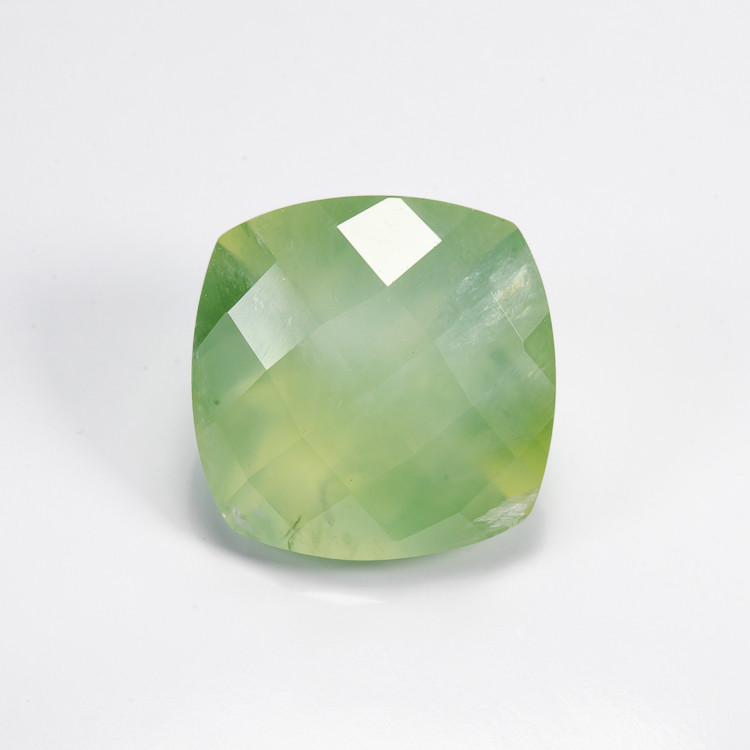
Prehnite
La prehnite è una gemma di silicato verde pera molto apprezzata dai collezionisti. Pur non essendo imparentata con la giada, alcuni venditori la chiamano "Nuova Giada". La pietra ha solitamente una traslucenza velata e spesso si mescola con epidoto o tormalina nera. Inoltre, brilla di una lucentezza perlacea (perlescenza) alla luce del sole!
La prehnite è una delle prime gemme a prendere il nome da qualcuno (Hendrik von Prehn) e il primo minerale descritto proveniente dal Sudafrica. Non sorprende che questa pietra verde latte abbia una lunga storia d'uso in Sudafrica, dove gli sciamani la usavano per connettere il sé fisico al regno spirituale.
Inoltre, alcuni chiamano la prehnite la "Pietra del Sogno" e la usano per i sogni lucidi o per l'interpretazione dei sogni. La prehnite è una pietra zodiacale fortunata per Scorpione, Capricorno e Bilancia.
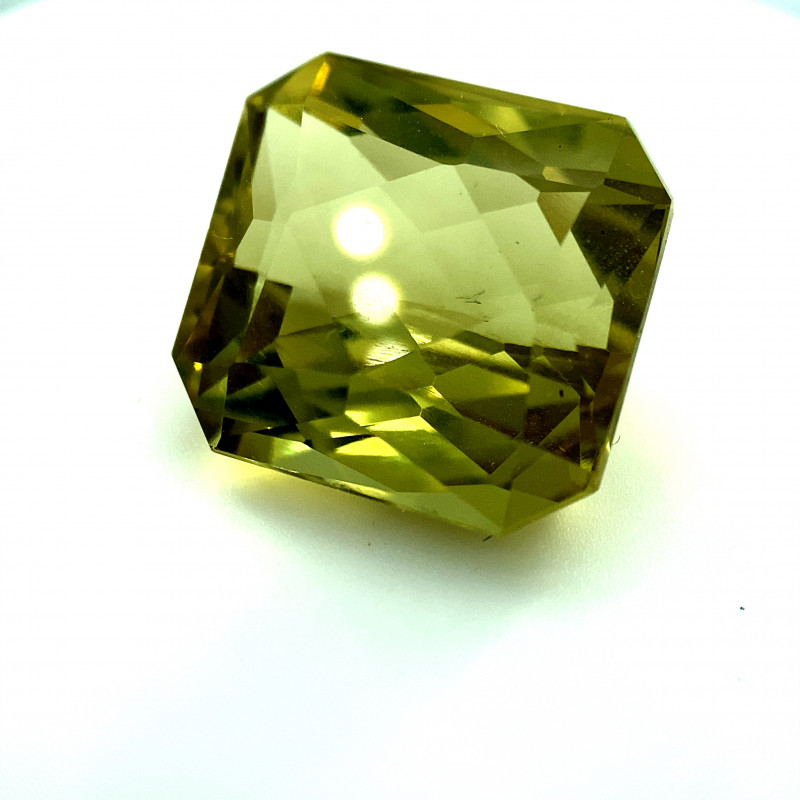
Hiddenite
L'Hiddenite è una gemma di spodumene disponibile in una gamma di verdi, tra cui il giallo-verde, il verde menta, il verde smeraldo e il verde sempreverde. Le ricche tonalità di verde della pietra hanno portato al soprannome di smeraldo lithia .
L'Hiddenite presenta un pleocroismo distinto, con tonalità giallo-verdastre, smeraldo, verde acqua e incolori. In genere, la parte superiore del cristallo è più scura e i lati più chiari.
La scoperta della pietra avvenne per caso quando la squadra WE Hidden, alla ricerca di platino per Thomas Edison, scoprì la hiddenite.
Come pietra curativa, l'hiddite può aiutare nella gestione dello stress e nella resilienza emotiva. È anche una pietra zodiacale per la Bilancia!
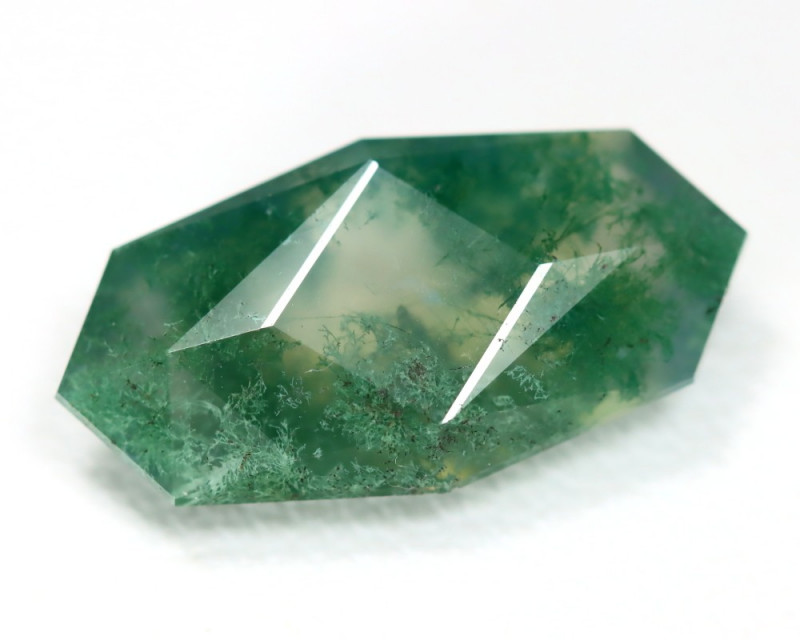
Agata
L'agata è un gruppo eterogeneo di gemme di calcedonio traslucide e striate. Esistono quattro tipi principali di agata verde:
Agata verde : una varietà dal verde chiaro al verde intenso utilizzata nell'antico Egitto per realizzare gioielli, sigilli e navi.
Agata muschiata : varietà prevalentemente verde, con sezioni incolori lattiginose o trasparenti, nota per le sue inclusioni muschiose verde felce o verde-blu.
Agata indiana : una varietà dai toni terrosi con predominanza di tonalità verdi, spesso abbinata a perle di altre pietre preziose verdi provenienti dall'India.
Botswana Agata: una varietà tipicamente rosa e grigia che può essere trovata con bande verdi e bianche.
L'agata indiana ha un particolare significato spirituale. È utilizzata per i mala o i rosari da preghiera, spesso indossati dai leader religiosi. Nella cultura indiana, la pietra dalle bande verdi è chiamata la pietra dei tre saggi: Rishi, Sadhu e Fachiri.
Tutte le pietre di agata verde simboleggiano generosità ed empatia. Gli usi più comuni di queste pietre in cristalloterapia includono la risoluzione dei conflitti e l'aumento della consapevolezza emotiva.

Tormalina verde
Cerchi pietre verdi che assomigliano agli smeraldi? Non cercare oltre: la tormalina verde è la scelta giusta! La tormalina verdelite è quella che più assomiglia allo smeraldo, ma è solo una delle tormaline verdi:
Tormalina cromata : una rara tormalina dravite verde brillante proveniente dalla Tanzania.
Tormalina Paraíba : la varietà più rara e pregiata, un'intensa tormalina elbaite blu neon, blu-verde o viola, proveniente dal Brasile. Molte tormaline dai toni freddi vengono trattate per avvicinarsi alla Paraíba.
Verdelite : una tormalina elbaite verde smeraldo chiamata “peridoto di Ceylon” o “smeraldo brasiliano”.
Tormalina anguria : una varietà di tormalina elbaite bicolore rosa e verde con un centro rosa e bordi verdi o strati di colori sovrapposti.
Le tormaline verdi presentano un forte pleocroismo nelle tonalità dal verde scuro al giallo-verde, sebbene le migliori mostrino un verde e un blu direzionali. Le varietà verdi presentano anche una purezza di tipo I, la migliore tra le varietà di tormalina.
La tormalina è disponibile in un arcobaleno di colori, ma la prima scoperta ufficiale nel 1554 fu una tormalina verde. La pietra è una pietra portafortuna tradizionale per i nati a ottobre e per l'ottavo anniversario di matrimonio!
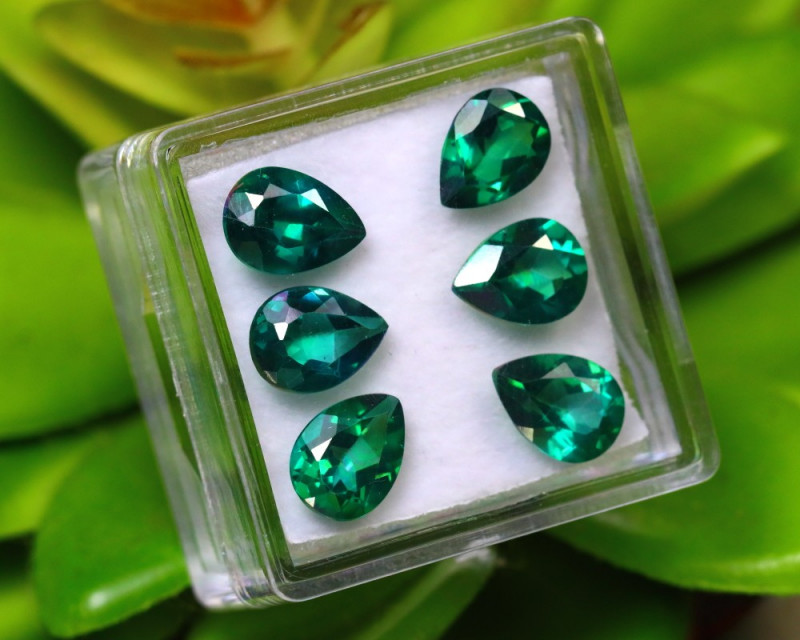
Topazio verde
Forse conoscete meglio altri colori di topazio , come il topazio blu, ma il topazio verde è un degno contendente quando si tratta di pietre verdi per gioielli. Con un punteggio di 8 sulla scala di Mohs, un pleocroismo brillante e un'eccellente purezza, queste pietre verde chiaro sono perfette per anelli o collane.
Il topazio verde presenta un brillante pleocroismo verde acqua, incolore e verde. Altri colori di topazio possono brillare con una fluorescenza giallo-verde o bianco-verdastra. La maggior parte delle pietre di topazio verde proviene dai Monti Urali in Russia o dal Nuovo Galles del Sud.
I nati a dicembre che preferiscono il verde al blu possono optare per una versione verde della loro pietra portafortuna, così come coloro che festeggiano il loro quarto anniversario di matrimonio! Nati a novembre? Anche il topazio è una pietra portafortuna di novembre !

Fluorite verde
La fluorite è una pietra preziosa di fluoruro di calcio con una vasta gamma di colori. I colori più comuni sono il verde e il viola. Anche la presenza di zone o bande di colore è comune, più spesso in verde, blu e viola. Inoltre, le pietre di fluorite cangianti virano dal blu o blu-verde al verde pallido e al lavanda sotto l'effetto dell'incandescenza.
Come per tutte le fluoriti, l'identificazione di questa gemma verde si basa sulla sua fluorescenza. Mentre alcune presentano una luminescenza gialla, la maggior parte della fluorite ha una forte luminescenza blu-viola. E il concetto di fluorescenza nasce dalla scoperta della luminescenza distintiva della fluorite verde.
Antiche credenze spirituali legate alla fluorite sostenevano che donasse saggezza e consapevolezza spirituale a chi la indossava. Oggi, questi cristalli verde scuro sono soprannominati "Pietre dell'Unità" e sono la pietra preziosa dello stato dell'Illinois, Stati Uniti.

Diaspro verde
Le pietre di diaspro sono un gruppo di gemme di calcedonio opaco con vari motivi multicolori, solitamente nei toni della terra.
Diamo un'occhiata ai nomi dei cristalli verde chiaro e verde scuro della famiglia del diaspro:
Diaspro verde : una varietà dal verde chiaro al verde scuro, chiamata "portatrice di pioggia" dai nativi americani.
Eliotropio : varietà verde scuro con macchie gialle o rosso sangue di ematite.
Diaspro fantasia : una varietà simile all'eliotropio, ma con colori aggiuntivi oltre al verde e al rosso (rosa, beige e marrone).
Diaspro della Foresta Pluviale : una varietà di riolite verde lime con inclusioni gialle, bianche e rosse. Può avere una matrice nera e grigia, e il cristallo verde lime è noto anche come "diaspro della giungla".
Diaspro imperiale verde : una varietà dai toni caldi, con sfumature pastello di rosso, rosa, marrone e bianco, con riflessi verdi.
Diaspro turchese : varietà color turchese con macchie e linee nere.
In generale, si dice che le pietre di diaspro portino consapevolezza di sé e forza di volontà. I nativi americani credono che il diaspro verde possa portare la pioggia, mentre i guaritori usano il diaspro fantasia o il diaspro della foresta pluviale per infondere gioia. Inoltre, l'eliotropio è una pietra portafortuna del mese di marzo !

Opale verde
Gli opali comuni (quelli senza giochi di colore) si presentano in molte tonalità , incluso il verde! Questa pietra portafortuna di ottobre si presenta in diverse tonalità, tra cui verde smeraldo, verde-giallo e, più spesso, giada tenue.
I migliori opali verdi provengono dalla Tanzania e dal Madagascar. Gli opali verdi della Tanzania, chiamati opali prase, sono traslucidi e di un verde giada. Gli opali verdi del Madagascar sono solitamente verde lime. Alcuni opali verdi contengono inclusioni minerali o organiche, persino fossili di insetti o animali !
Tuttavia, se vedete una pietra chiamata "opale svizzero verde", non si tratta di opale, bensì di crisolite, nome improprio. Ecco cosa cercare nell'identificazione di questa gemma verde:
Una lucentezza delicata e lattiginosa sotto la superficie.
Forse sono presenti ragnatele o macchie, ma non strisce orizzontali, bande colorate o motivi strani.
La capacità di essere graffiato da qualsiasi gemma di valore superiore a 5,5-6 sulla scala di Mohs.
Il soprannome metafisico dell'opale è "Pietra della Risoluzione", per la sua presunta capacità di aiutare a liberarsi dalle preoccupazioni e guarire dai traumi. Queste pietre rappresentano anche tenerezza e amore.
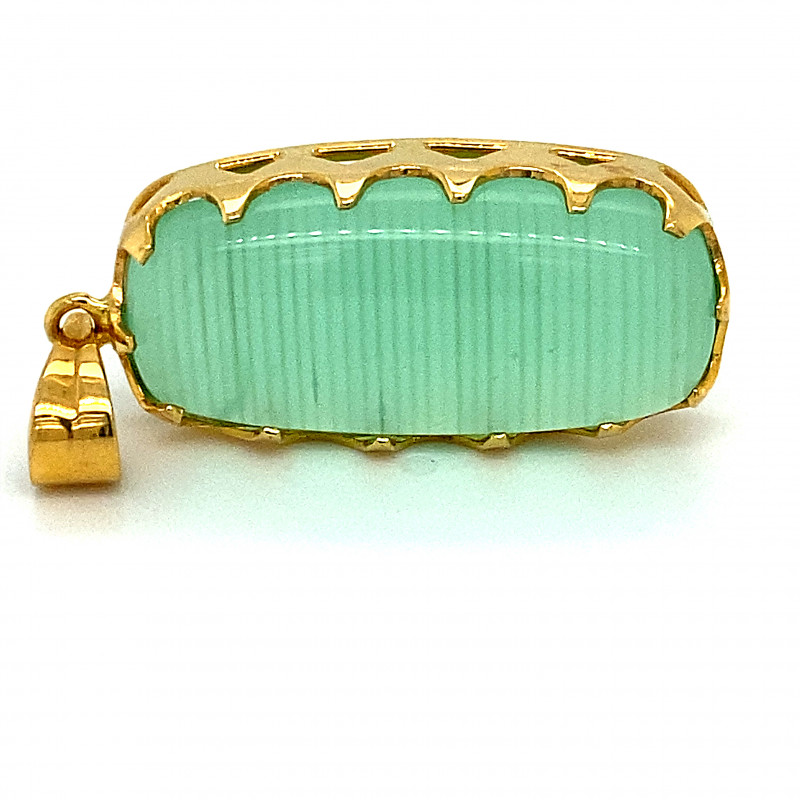
Calcite verde
La calcite verde è una varietà del minerale carbonato di calcio calcite, noto per la sua varietà di utilizzi in vari settori come l'edilizia e l'agricoltura. Le principali fonti di calcite verde sono Brasile e Messico.
La calcite è una pietra tenera, classificata solo al 3° posto sulla scala di Mohs, quindi le pietre burattate o cabochon sono più comuni dei gioielli sfaccettati . Tuttavia, la loro luminescenza è impressionante, con un giallo brillante che si manifesta con fluorescenza, fosforescenza e termoluminescenza.
Queste pietre adornano i segni zodiacali del Sagittario e dei Pesci. Dal punto di vista curativo, la calcite è popolare per rafforzare il discernimento e la memoria.

Pietra di luna verde
La pietra di luna è una gemma di feldspato ortoclasio nota per la sua adularescenza, un tenue bagliore interno bianco-bluastro che ricorda la luce lunare. Mentre le pietre di luna pure sono incolori , le inclusioni di ferro possono creare colori come il verde! La pietra di luna arcobaleno, una pietra verde-arancio, è una pietra bellissima, ma in realtà è una varietà di labradorite, non una pietra di luna.
Le pietre di luna verdi possono essere trasparenti o traslucide. Di solito presentano inclusioni a forma di millepiedi: piccole, sottili fessure intersecanti. Le pietre di luna possono anche presentare gatteggiamento (l'effetto "occhio di gatto") e asterismo, una stella di luce riflessa a 4 o 6 raggi.
Passione e amore per la pietra di luna, uniti all'accettazione delle forze femminili. Astrologicamente, questa gemma adorna il segno del Cancro!
Andiamo avanti, come si chiama un cristallo verde salvia? Avventurina verde!

Avventurina verde
L'avventurina è una gemma di quarzo e feldspato disponibile in molti colori. Tuttavia, le avventurine verdi sono le più comuni e amate. Questi cristalli sono solitamente verde salvia, ma possono anche essere verde trifoglio o verde foresta.
Alcune inclusioni possono alterare il colore dell'avventurina in altre tonalità di verde. Ad esempio, la fucsite può conferire alla pietra un colore verde ghiaccio o blu, mentre la goethite può conferire una colorazione bruno-verdastra.
L'avventurina è nota soprattutto per la sua aventurosità, un effetto metallico scintillante causato da inclusioni di mica o pirite . Spiritualmente, si dice che l'avventurina verde porti prosperità e autoaccettazione.

Diamante verde
Il verde è uno dei colori più rari nei diamanti, soprattutto quelli naturali. I diamanti verdi hanno solitamente sfumature blu, grigie o gialle. Gli esemplari di maggior valore, classificati "Fancy Intense" o "Fancy Vivid", presentano una colorazione satura e uniforme di tonalità media.
Questi diamanti possono essere sintetici, trattati o naturali. I diamanti verdi naturali si formano attraverso l'irradiazione naturale, difetti strutturali o la presenza di determinati elementi come azoto o nichel.
I trattamenti per la creazione di diamanti verdi includono l'irradiazione e il rivestimento con un sottile strato di silice. Sia con i diamanti verdi naturali che con quelli trattati in laboratorio, il colore verde risultante è spesso solo un sottile strato superficiale, quindi la sfaccettatura di queste gemme è rara.
Due famosi diamanti verdi sono il Dresden Green e l'Aurora Green. Il Dresden Green è un diamante sfaccettato da 41 carati con colorazione uniforme, registrato per la prima volta nel 1772. L'Aurora Green è un diamante verde "Fancy Vivid" da 5 carati incastonato in un anello. Questo diamante ha stabilito due record: il diamante verde più costoso venduto all'asta (16,2 milioni di dollari) e il più grande diamante Fancy Vivid verde naturale.
Indipendentemente da come siano realizzate, queste pietre portafortuna di aprile sono simbolo di nuovi inizi e crescita.
Pianta le tue radici con le pietre preziose verdi!
Non serve essere giardinieri per avere il pollice verde: basta indossare un meraviglioso anello con pietra verde! Che tu preferisca il verde lattiginoso della prehnite, le tonalità terrose del diaspro o la classica raffinatezza dello smeraldo, c'è un cristallo verde perfetto che ti aspetta!
Non lasciarti invidiare: trova subito la tua pietra preziosa verde preferita!
Cerca il Gemstone Encyclopedia
Aste correlate
articoli Correlati
Ognuno di noi ha una pietra preziosa che corrisponde al proprio segno zodiacale. Queste pietre sono anche note come la tua Pietra Stellare. Scopri di più su queste pietre e qual è la tua Pietra Stellare.
10th May 2018
In origine, le pietre portafortuna o gemme erano associate a un segno zodiacale o al mese di nascita di un individuo. Scopri qual è la tua pietra e guarda le pietre che abbiamo in vendita.
8th Feb 2021
Esistono moltissimi strumenti sul mercato per testare una pietra preziosa, ma quali sono i principali strumenti necessari per un'analisi semplice? Diamo un'occhiata a quattro strumenti per testare le pietre preziose.
4th Mar 2020
Articoli Recenti
Le pietre a forma di fiore di crisantemo sono meraviglie naturali caratterizzate da un motivo floreale di calcite bianca, celestina o andalusite incastonato su calcare nero o argillite.
13th Jan 2026
La pietra del sole a reticolo arcobaleno è una varietà di feldspato con tre splendidi effetti ottici dovuti alla presenza di varie inclusioni. La sua colorazione infuocata e il suo motivo a reticolo la rendono una gemma rara da collezione!
12th Jan 2026
La tulite è una rara pietra preziosa norvegese dalla vivace tonalità rosata, appartenente alla famiglia dei minerali della zoisite, comunemente utilizzata in montature e pendenti per gioielli.
6th Jan 2026
Categorie di articoli
How To's is where you will find helpful articles from gem Rock Auctions on how to cut gemstones, select gemstones and buy gemstones.
9 Articoli








